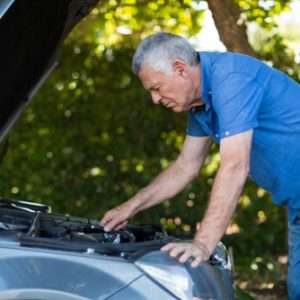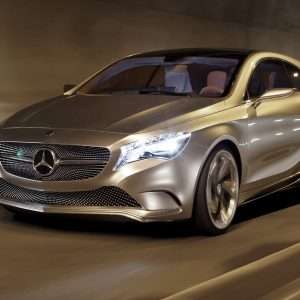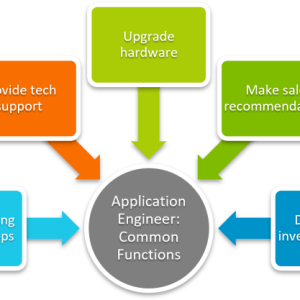Converting your car to electric power is a significant undertaking․ It involves replacing the internal combustion engine (ICE) with an electric motor and battery pack․ This process offers numerous benefits, including reduced emissions and lower running costs․ It’s a complex project, but the rewards can be substantial․ Consider the environmental impact․
Key Components for Conversion
Several key components are required for a successful electric engine conversion․ These include:
- Electric Motor: The heart of the system, providing the power to drive the wheels․
- Battery Pack: Stores the electrical energy needed to power the motor․ Capacity is crucial․
- Motor Controller: Regulates the power flow from the battery to the motor․
- Battery Management System (BMS): Monitors and manages the battery pack’s health and safety․
- Charger: Allows you to recharge the battery pack from an external power source․
- Adapter Plates: Connect the motor to the transmission (if retained)․
Choosing the right components is crucial for performance and reliability․ Research thoroughly before making any purchases․ Don’t underestimate the importance of quality․
The Conversion Process: A Step-by-Step Guide
Step 1: Planning and Research
Thorough planning is essential․ Research different conversion kits and components․ Determine your budget and desired performance characteristics․ A well-defined plan will save you time and money․
Step 2: Removing the ICE
Carefully remove the internal combustion engine, fuel tank, and exhaust system․ This step requires mechanical expertise․ Ensure proper disposal of fluids and components․
Step 3: Installing the Electric Motor and Battery Pack
Mount the electric motor and battery pack in the vehicle․ This may require custom fabrication․ Ensure secure and safe mounting․
Step 4: Wiring and Connections
Connect the motor controller, BMS, and other electrical components․ Proper wiring is crucial for safety and performance․ Double-check all connections․
Step 5: Testing and Calibration
Test the system thoroughly․ Calibrate the motor controller for optimal performance․ Address any issues that arise during testing․
FAQ: Electric Engine Conversion
Is electric engine conversion legal?
Regulations vary by location․ Check your local laws and regulations regarding electric vehicle conversions․ Some areas may require inspections or certifications․
How much does it cost to convert a car to electric?
The cost varies depending on the vehicle, components, and labor involved․ It can range from a few thousand dollars to tens of thousands․ Careful budgeting is essential․
What is the range of a converted electric car?
The range depends on the battery pack size and vehicle efficiency․ Expect a range of 50 to 200 miles or more․ Consider your driving habits․
Can I convert any car to electric?
While most cars can be converted, some are more suitable than others․ Consider the vehicle’s weight, size, and structural integrity․ Older, simpler cars are often easier to convert․
My Conversion Journey: A Personal Account
I embarked on my electric engine conversion project with a mix of excitement and trepidation․ I chose a classic 1970s Beetle for my project, figuring its simple design would make the conversion process more manageable․ Boy, was I in for a ride! The initial research phase was overwhelming․ So many options, so many technical terms I barely understood․ I spent weeks poring over forums, watching YouTube videos, and consulting with other EV enthusiasts․ I finally settled on a mid-range motor and a battery pack that promised a decent range without breaking the bank․
The Challenges I Faced
Removing the old engine was surprisingly straightforward, though messy․ Years of accumulated grime and oil made it a less-than-pleasant task․ The real challenge came with fitting the new motor․ The adapter plate I ordered didn’t quite line up, requiring some creative modification with a grinder and a welder․ I definitely learned a lot about metalworking during that phase! Wiring was another hurdle․ I’m not an electrician by trade, so deciphering the wiring diagrams and connecting everything correctly was nerve-wracking․ I triple-checked every connection before finally flipping the switch․ Thankfully, nothing exploded!
The Rewards and the Lessons Learned
The moment I finally drove my electric Beetle was exhilarating․ The instant torque was incredible, and the silence was a welcome change from the noisy ICE engine․ I’ve been driving it for a few months now, and I’m still amazed by how much I enjoy it․ The range is about 80 miles, which is perfect for my daily commute․ I’ve also noticed a significant reduction in my running costs․ No more gas station visits! The conversion wasn’t easy, but it was incredibly rewarding․ I learned so much about electric vehicles, mechanics, and problem-solving․ I’d do it again in a heartbeat․
- Patience is key: Don’t rush the process․ Take your time and do things right․
- Join a community: Connect with other EV enthusiasts for support and advice․
- Don’t be afraid to ask for help: There are plenty of people willing to share their knowledge․
Cost Breakdown: My Project Expenses
I kept meticulous records of my expenses throughout the conversion process․ Here’s a rough breakdown of where my money went:
- Electric Motor and Controller: $3,000
- Battery Pack: $5,000
- Battery Management System (BMS): $500
- Charger: $300
- Adapter Plates and Mounting Hardware: $200
- Wiring and Electrical Components: $100
- Tools and Equipment: $200 (I already owned some tools)
- Miscellaneous Expenses (fluids, connectors, etc․): $100
- Total: $9,400
This is just an estimate, and your costs may vary depending on your specific project․ I saved money by doing most of the labor myself․ If you hire a professional, expect to pay significantly more․




